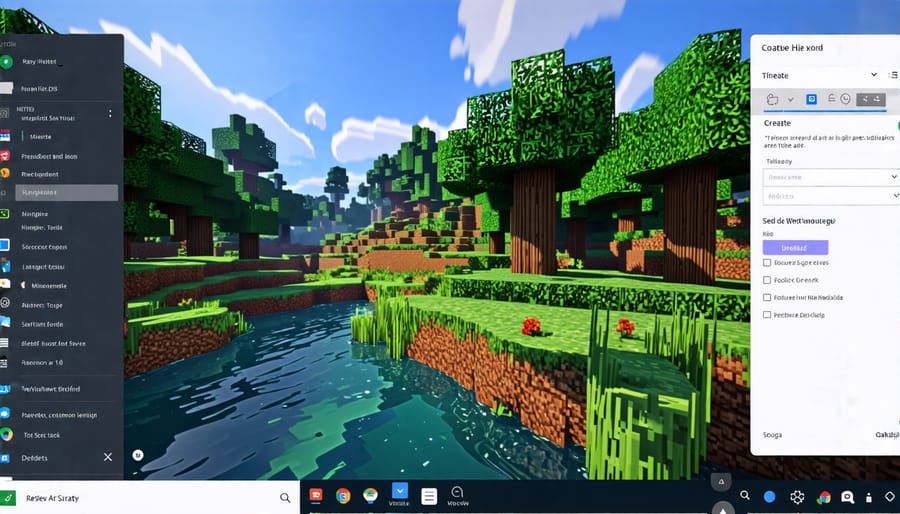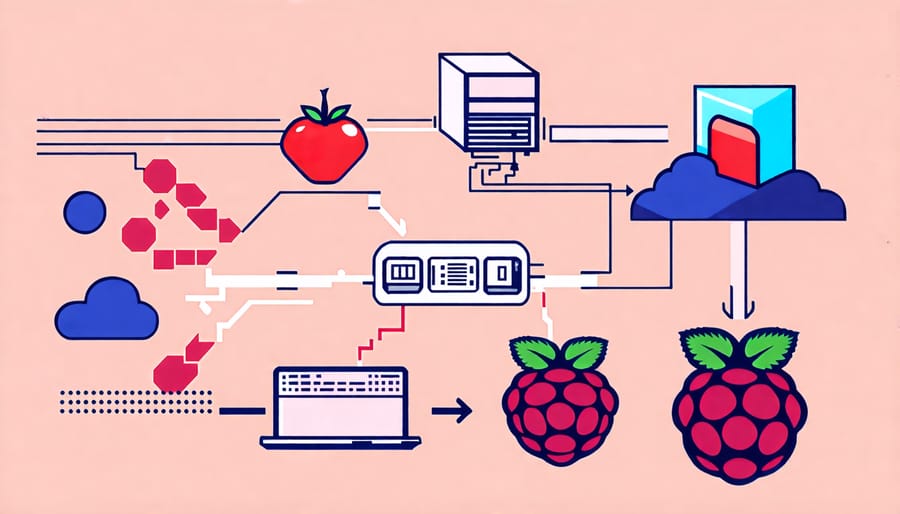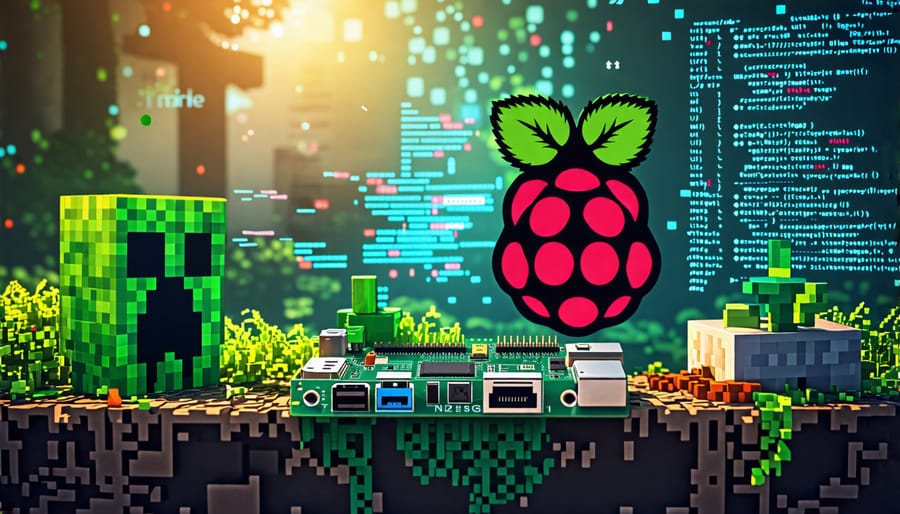Configure your Raspberry Pi with Raspberry Pi OS, enable SSH, and install Java to lay the foundation for your game server on a Raspberry Pi. Download the latest Minecraft server .jar file, create a startup script, and configure server properties like difficulty and game mode to customize your Minecraft world. Forward the necessary ports on your router, start the server, and invite friends to join you in building, exploring, and conquering your very own Raspberry Pi-powered Minecraft realm.
Gathering the Necessary Hardware
Choosing the Right Raspberry Pi Model
When choosing a Raspberry Pi model for your Minecraft server, consider the performance requirements and the number of players you plan to host. The Raspberry Pi 4 is the most powerful model in the current lineup, making it an excellent choice for running a Minecraft server. It offers improved processor speed, increased RAM options (up to 8GB), and better networking capabilities compared to previous models.
If you’re setting up a small server for a few players, a Raspberry Pi 4 with 2GB or 4GB of RAM should suffice. However, if you plan to host a larger number of players or use resource-intensive mods, opt for the 8GB RAM version to ensure smooth performance.
While older Raspberry Pi models, such as the Raspberry Pi 3B+ or 3A+, can still run a Minecraft server, they may struggle with performance, especially when hosting multiple players or using mods. These models have less RAM and slower processors, which can lead to lag and reduced gameplay experience.
Ultimately, the Raspberry Pi 4 is the recommended choice for running a Minecraft server, as it offers the best performance and flexibility to accommodate your server’s needs.

Storage and Power Supply Considerations
When selecting storage for your Raspberry Pi Minecraft server, consider using a high-speed microSD card (Class 10 or higher) with at least 16GB capacity to ensure smooth performance and ample space for the operating system, Minecraft server files, and world data. Alternatively, you can use an external USB drive or SSD for improved read/write speeds and increased storage capacity.
Powering your Raspberry Pi is crucial for server stability. Use a reliable power supply that provides a steady 5V and at least 2.5A of current. Insufficient power can lead to unexpected shutdowns and data corruption. Consider using the official Raspberry Pi power supply or a reputable third-party alternative with the recommended specifications.
Setting Up the Raspberry Pi
Installing the Operating System
To install a lightweight Raspberry Pi OS optimized for running a Minecraft server, start by downloading the Raspberry Pi OS Lite image from the official Raspberry Pi website. This version of the OS is stripped down to the essentials, making it perfect for running a dedicated Minecraft server.
Once downloaded, use an image writing tool like Etcher to flash the OS image onto your microSD card. Insert the microSD card into your Raspberry Pi and connect it to a power source, monitor, keyboard, and mouse.
On first boot, the Raspberry Pi will prompt you to configure basic settings such as locale, timezone, and password. Follow the on-screen instructions to complete the initial setup.
After the initial setup, update your Raspberry Pi’s software packages to ensure you have the latest versions. Open a terminal and run the following commands:
“`
sudo apt update
sudo apt full-upgrade
“`
These commands will update the package list and upgrade all installed packages to their latest versions.
Next, install the necessary dependencies for running a Minecraft server. In the terminal, run:
“`
sudo apt install openjdk-8-jdk-headless
“`
This command installs the headless version of the Java Development Kit (JDK) 8, which is required to run the Minecraft server software.
With the OS and dependencies installed, you’re now ready to download and configure the Minecraft server software on your Raspberry Pi. The lightweight OS and optimized setup will ensure your Minecraft server runs smoothly and efficiently, providing an enjoyable gaming experience for you and your players.
Configuring the Raspberry Pi
Before installing the Minecraft server software, it’s crucial to optimize your Raspberry Pi’s configuration for optimal performance. Start by ensuring your Pi is running the latest version of Raspbian, the official operating system. Open the terminal and run “sudo apt update” and “sudo apt upgrade” to update the system packages. Next, allocate more memory to the GPU by modifying the “config.txt” file using the command “sudo nano /boot/config.txt”. Uncomment the line “gpu_mem=128” and change the value to “gpu_mem=256” to dedicate more memory to the graphics processor. Additionally, overclock your Raspberry Pi to improve its performance by adding “arm_freq=1350” and “sdram_freq=500” to the same file. Save the changes and reboot your Pi for the modifications to take effect. These configuration steps will ensure your Raspberry Pi is well-prepared to handle the demands of running a Minecraft server.

Installing and Configuring the Minecraft Server Software
Choosing the Right Minecraft Server Software
When choosing the right Minecraft server software for your Raspberry Pi, you have several options to consider. The most popular choices include Spigot, Paper, and Bukkit, each with its own set of features and benefits.
Spigot is an optimized version of CraftBukkit, offering improved performance and stability. It supports a wide range of plugins, allowing you to customize your server’s gameplay and features. Paper, a fork of Spigot, provides even better performance and is designed to handle larger player counts and more complex plugins.
Bukkit, the predecessor of Spigot, is known for its extensive plugin library and community support. While not as optimized as Spigot or Paper, it remains a solid choice for those prioritizing plugin compatibility.
Ultimately, your decision should be based on your specific needs, such as desired performance, plugin support, and community resources available for each software option.
Installing the Minecraft Server
To install the Minecraft server software on your Raspberry Pi, start by updating your system with the command sudo apt update && sudo apt upgrade. Next, install the necessary dependencies by running sudo apt install default-jdk git screen. Create a new directory for your Minecraft server files using mkdir minecraft and navigate to it with cd minecraft.
Download the latest version of the Minecraft server software using the command wget [link to the server.jar file], replacing the link with the URL for the desired version. Once the download is complete, rename the file to server.jar for simplicity.
Before starting the server, you need to agree to the Minecraft End User License Agreement (EULA). Create a new text file named eula.txt using nano eula.txt and add the line eula=true to the file. Save and exit the file.
To allocate more memory to the Minecraft server, create a new script file named start.sh using nano start.sh. Add the following line to the script:
java -Xmx1024M -Xms1024M -jar server.jar nogui
This command allocates 1GB of RAM to the server. Adjust the values according to your Raspberry Pi’s available memory. Save the file and make it executable with chmod +x start.sh.
Finally, start the Minecraft server by running the script with ./start.sh. The server will generate the necessary configuration files and start running. You can now connect to your Minecraft server using the Raspberry Pi’s IP address and the default port (25565).
Configuring Server Settings
To configure essential server settings for your Minecraft server on a Raspberry Pi, you’ll need to modify the server.properties file. This file contains various settings that control world generation, player slots, game rules, and more.
First, open the server.properties file using a text editor like nano. Look for the “max-players” setting and change it to the desired number of player slots for your server. Keep in mind the limited resources of the Raspberry Pi when deciding on this number.
Next, you can customize world generation settings. The “level-seed” option allows you to enter a specific seed value for generating the world, while “generate-structures” determines whether structures like villages and strongholds will be generated.
Game rules can also be configured in the server.properties file. For example, “pvp” controls whether player vs. player combat is allowed, “difficulty” sets the game difficulty, and “allow-flight” determines if players can use flying mods.
Other notable settings include “motd,” which lets you set a custom message of the day for your server, and “view-distance,” which controls the server’s render distance. Adjust these settings based on your preferences and the Raspberry Pi’s performance.
Remember to save the server.properties file after making any changes. To apply the new settings, restart your Minecraft server. With these configurations tailored to your needs, your Minecraft server on the Raspberry Pi will be ready for players to join and enjoy the game together.
Port Forwarding and Network Configuration
To make your Minecraft server accessible to players outside your local network, you need to configure port forwarding on your router. Port forwarding directs incoming traffic from a specific port on your router to the same port on your Raspberry Pi. For Minecraft servers, the default port is 25565.
The process of setting up port forwarding varies depending on your router’s make and model. Consult your router’s documentation or search online for specific instructions. Generally, you’ll need to access your router’s web-based configuration page, navigate to the port forwarding settings, and create a new rule that forwards traffic from port 25565 to your Raspberry Pi’s local IP address.
To find your Raspberry Pi’s local IP address, open a terminal and type `hostname -I`. The first set of numbers displayed is your IP address (e.g., 192.168.1.100). Make sure to assign a static IP address to your Raspberry Pi to ensure the port forwarding rule remains valid even if the device reboots. You can set a static IP address through your router’s DHCP reservation feature or by modifying the Raspberry Pi’s network configuration files.
Once port forwarding is set up, players can connect to your Minecraft server using your public IP address, which can be found by visiting websites like WhatIsMyIP.com. If you want to use a domain name instead of an IP address, consider setting up a dynamic DNS service, which maps your ever-changing public IP address to a fixed domain name.
To manage your Minecraft server remotely, you can set up a Raspberry Pi Remote Desktop connection or use remote access tools like SSH or VNC. This allows you to control your Raspberry Pi and Minecraft server from another device on your network or even from the internet, provided you have the necessary network configurations and security measures in place.

Conclusion
In conclusion, running a Minecraft server on a Raspberry Pi is an exciting and rewarding project that combines the power of a single-board computer with the endless possibilities of Minecraft. By following the steps outlined in this article, you can set up your own server, customize it to your liking, and enjoy playing with friends or hosting a community.
To maintain and optimize your Raspberry Pi Minecraft server, be sure to keep your software up to date, regularly back up your world files, and monitor your server’s performance. You can also explore additional plugins and mods to enhance gameplay and add new features to your server.
Remember, running a Minecraft server on a Raspberry Pi is not only fun but also an excellent way to learn about server management, networking, and computer science concepts. By taking on this project, you’ll gain valuable skills and experience that can be applied to other areas of your life.
So what are you waiting for? Gather your Raspberry Pi, follow the steps, and embark on your own Minecraft server adventure today! With a little effort and creativity, you’ll be hosting an incredible Minecraft world in no time.


